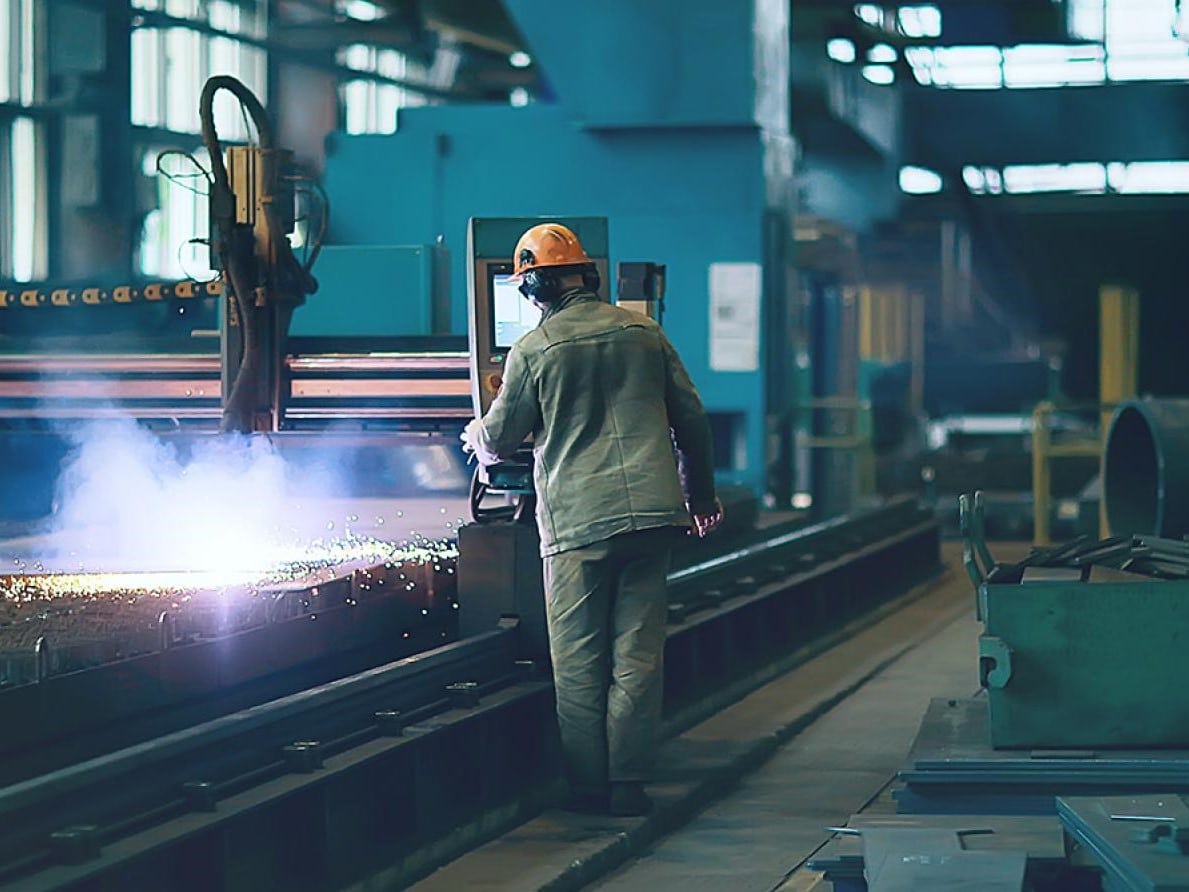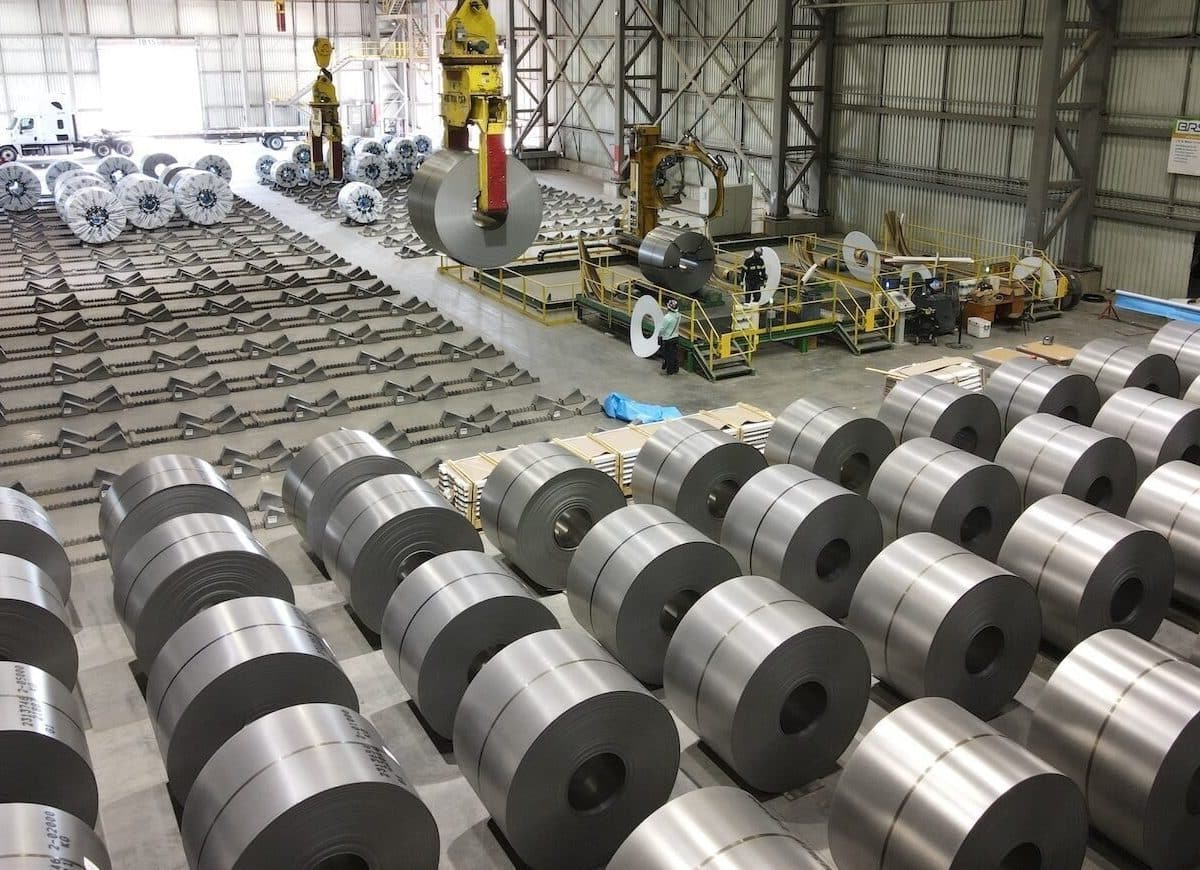
Can Green-Steel Hubs Redefine the Steel Industry’s Carbon Footprint?
Published by Todd Bush on January 15, 2025
The steel industry, responsible for 7% of global greenhouse gas (GHG) emissions, faces an urgent need for decarbonization. Efforts to reduce emissions are taking shape globally, and one strategy gaining traction is the concept of green-steel hubs.
These hubs promise to revolutionize steel production by integrating green hydrogen, renewable energy, and innovative technologies like carbon capture, utilization, and storage (CCUS).
>> RELATED: Electra and Interfer Sign MOU to Collaborate on Clean Iron and Green Steel Production

The Need for Change in Steel Production
Traditional steelmaking heavily relies on blast furnace-basic oxygen furnace (BF-BOF) plants, which use coke to process iron.
This method is a major contributor to GHG emissions. To meet global climate goals, alternatives are crucial.
Europe has taken the lead, implementing CO2 taxes and legislative incentives to drive decarbonization. Other regions are expected to follow as global pressures mount.
Companies are exploring innovative solutions, such as direct reduced iron (DRI) production using green hydrogen and the adoption of electric arc furnaces (EAFs) powered by renewable energy.
What Are Green-Steel Hubs?
Green-steel hubs are strategically located facilities designed to produce low-carbon steel.
These hubs leverage low-cost energy sources, suitable raw materials like hydrogen and iron ore, and advanced technologies to cut emissions.
By separating ironmaking from steel production, green-steel hubs aim to optimize both processes and create a more sustainable supply chain.
"Green-steel hubs represent a transformative approach to reducing emissions in one of the world's most carbon-intensive industries," said a leading industry expert.
The potential benefits extend beyond environmental impact. Green-steel hubs can help stabilize supply chains, reduce reliance on imports, and support growing demand in sectors like automotive, construction, and heavy machinery.

>> In Other News: Plug Seals Monumental Deal with Allied Green Ammonia for a Mega 3 GW Electrolyzer System
Technology Driving the Transformation
At the heart of these hubs is DRI production. This method replaces coke with green hydrogen or natural gas, significantly cutting CO2 emissions.
The resulting iron is then processed in EAFs powered by renewable energy, completing the decarbonized production cycle.
Hybrid models are also being explored. These involve combining scrap steel with hot briquetted iron (HBI) produced at green-steel hubs, offering further flexibility in sourcing and production.
"The success of green-steel hubs will depend on cross-industry collaboration and strategic integration," noted a sector analyst. Such collaboration ensures the most efficient use of resources and technology.
Global and Regional Impact
Europe remains at the forefront of this movement, but North America is catching up.
The United States and Canada, with abundant natural gas and renewable energy resources, are well-positioned to develop these hubs. Recent projects focus on integrating CCUS technologies to further mitigate emissions.
For instance, green-steel hubs could be strategically located near iron ore mines in Canada or renewable energy zones in the U.S., creating a competitive advantage.
These hubs are expected to play a critical role in global decarbonization efforts, especially as more countries commit to net-zero goals.
Challenges to Overcome
Despite their potential, green-steel hubs face challenges. High initial costs, limited availability of green hydrogen, and the need for substantial investment in infrastructure are significant barriers.
Additionally, cross-industry collaboration requires coordination among various stakeholders, from energy providers to policymakers.
The transition also depends on scaling up renewable energy production and ensuring a consistent supply of materials like green hydrogen.
These efforts require long-term commitments from governments and private sectors alike.
The Path Forward
Green-steel hubs offer a practical and innovative solution to the steel industry’s carbon crisis.
By embracing technology and fostering collaboration, they can help achieve meaningful carbon emissions reductions while supporting economic growth.
As the industry continues its journey toward sustainability, the role of these hubs will likely expand. “This is more than just a shift in production methods—it’s a redefinition of how the steel industry operates,” emphasized a senior researcher.
By prioritizing decarbonization and leveraging regional strengths, green-steel hubs have the potential to transform global supply chains.
The steel industry is at a crossroads, and green-steel hubs could lead the way to a sustainable future.
Subscribe to the newsletter
Daily decarbonization data and news delivered to your inbox
Follow the money flow of climate, technology, and energy investments to uncover new opportunities and jobs.
Latest issues
-
Can One Truck Fix Hydrogen’s Biggest Problem?
Inside This Issue 🚛 Alberta's Shared Truck Model Could Crack Hydrogen Adoption ✈️ ZeroAvia Completes Financing Round 🌾 Frontier And NULIFE Scale New Biowaste Carbon Removal Approach 🔥 WAGABOX® Of ...
-
North America’s Carbon Removal Year in Review: Winners, Losers, Surprises
Inside This Issue 🌎 North America's Carbon Removal Year in Review: The Deals, Policies, and Milestones That Shaped 2025 🚢 Hapag-Lloyd And North Sea Container Line Win ZEMBA Second E-Fuel Tender 🪨 ...
-
CCS Just Got Cheaper Than Anyone Expected
Inside This Issue 🧪 Shrinking the CCS Energy Penalty: A Molten Borate Breakthrough Promises Viability for Hard-to-Abate Canadian Oil & Gas 👤 Syntholene Energy Corp Appoints Former CEO of Carbo...
Company Announcements
-
WAGABOX® Of Steuben County, The First WAGABOX® Unit In The US
Deployment / Application Site Location: Bath, Steuben County, New York, USA Site/Plant name: Steuben County Landfill Partners/Clients: Steuben County (landfill owner), Corning Natural Gas (...
-
ZeroAvia Completes Financing Round
KEMBLE, UK and EVERETT, Wash., Dec. 22, 2025 /PRNewswire/ -- ZeroAvia today announced that it has completed a further round of financing, led by Barclays Climate Ventures, Breakthrough Energy Ventu...
-
CHARBONE Delivers Its First Load Of Clean UHP Hydrogen In Ontario
BROSSARD, QC, Dec. 22, 2025 /PRNewswire/ -- CHARBONE CORPORATION (TSXV: CH; OTCQB: CHHYF; FSE: K47) ("CHARBONE" or the "Company"), a North American producer and distributor specializing in clean Ul...
-
SÃO PAULO, BRAZIL, DECEMBER 17, 2025 – InPlanet, a pioneer in tropical Enhanced Rock Weathering (ERW), announced today that it has signed an agreement with Microsoft to remove more than 28,500 tonn...